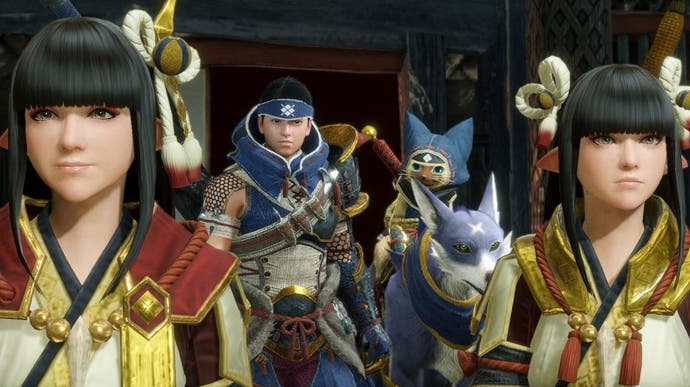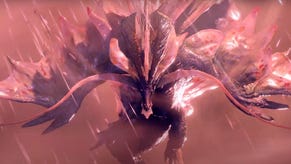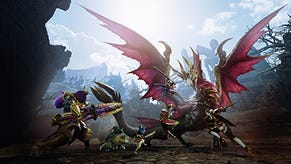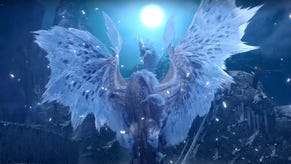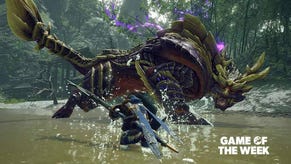Monster Hunter Rise review - the Switch's best game since Breath of the Wild
Magnanimalos.
I've just drifted my dog into battle, his hindlegs tilting out in a glorious arc at the press of a button for that precious extra boost of speed, before dismounting with the flick of a wirebug that sends a silken line up into the sky, allowing me to grapple onto it and swing towards my prey. In mid-air I pull out a sword fashioned from the remains of a bony Besarios and drive it straight down into the skull of another. Bring this big bastard down and I can fashion a hat out of his hide to complete my Besarios outfit and grant myself an attack boost, so that I might be able to go out and do it again only with more flair, and more efficiency.
Good gosh do I love Monster Hunter.
The core loop remains unchanged but Capcom's series has evolved an awful lot since its inception way back in 2004, and after a long run on Nintendo's console that peaked with the exceptional Monster Hunter 4 Ultimate it was only after 2018's multi-platform Monster Hunter World that the series found a proper foothold in the west. Here was Monster Hunter at its most accessible - and, with expansion Iceborne, at its most brutal - and for the first time it no longer felt like a niche pursuit. Monster Hunter had finally gone mainstream.
Forgive me for making crass assumptions, but I'd presumed the series' return to Nintendo, and to more modest hardware - Monster Hunter Rise is a Switch timed exclusive, with the PC version not arriving until early 2022 - might mean a more modest outing for the series. I could not have been more wrong. This is as lavish and opulent a thing as Monster Hunter's ever seen, Capcom's inhouse RE Engine excelling in its debut for the series while its soundtrack is fully orchestrated and accompanied by full vocals (every single monster gets its own unique introductory song complete with shamisen and hyoshigi in keeping with Rise's traditional Japanese theming). It's as if all that money made through Monster Hunter World's success somehow made it into Rise' production.
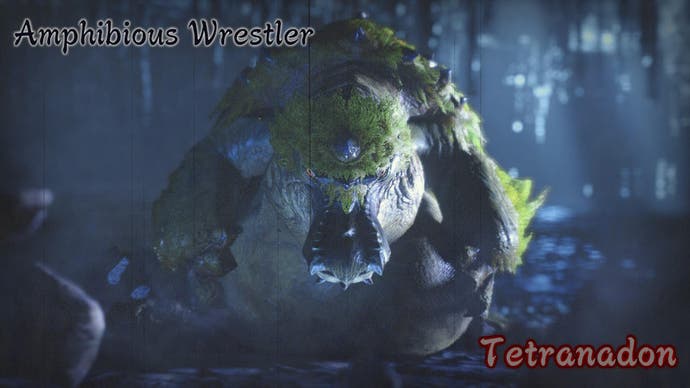
This is as significant a step forward for Monster Hunter as World was before it, with a generous suite of new features making hunting more palatable, more action packed and much, much more pleasurable. Before running through them all, though, there's one underlying change worth noting that's seismic in nature, and that informs everything that's new this time out. Traditionally in this series, you're the whipping boy - for the first few dozen hours at least - as you get knocked this way and that by all number of beautiful beasts. In Monster Hunter Rise, however, you are OP AF, and I am 100 per cent for it.
It's not so much that the monsters here are a pushover, and more that Rise is willing to push you through it all with a bit more pep and pace than seen in previous games - here you'll be going head to head with new signature beast Magnamalo when an earlier entry would still have you ferrying eggs from one end of the map to another. Hunts are quicker, too - even the later enemies unlocked after the credits roll, itself done after some 20 hours, can be felled in just over 10 minutes if you've half an idea what you're doing. Is that a problem for a series where endurance and hard-edged challenge has often been part of the make-up? Maybe for some but most certainly not for me - and anyway, the reason these things go down so much quicker is because you the player are so much more dynamic than ever before, with so much more in your arsenal.

The headline addition might be the wirebugs that let you fling from point to point, though they're just one part of a whole cohort of new colleagues that open Monster Hunter's maps like never before. As in Monster Hunter World, maps are now one continuous area rather than the partitioned zones of old, though they're freer and less claustrophobic than the dense biomes found last time out, partly to make room for the all-new Palamutes. These are canine mounts, on hand to hop onto at the press of a button and taking so much of the misery out of tracking. It helps that these things are absolute delights, customisable to an outrageous degree whether that's through you outfitting them with spoils picked up through your adventure or even in the character creator itself (a tool that's as powerful as any I've seen in a game like this, and something that could quite easily consume the first half dozen hours of your time with Monster Hunter Rise should you be that way inclined).
While riding your Palamute you can consume items or resharpen your weapon, and the act of tracking itself has been greatly streamlined: thanks to your new Cohoot buddy, it's now simply possible to see each monster on the map, a blunt solution that's still more elegant than Monster Hunter World's scoutflies that have now been completely excised. The actual involvement of your Cohoot is limited, admittedly, though it's hard to complain too much: Monster Hunter Rise gives you an owl companion you can dress as you please, and that's plenty good enough for me.
For all that, and the returning Palicoes that aid you in battle, it is those wirebugs that really do make all the difference. How profound that will ultimately prove to be it's hard to say- after 50 hours with Rise, I'm only really just beginning to prod at the possibilities - though I will say they're responsible for one of the most engaging, open and elastic traversal systems I've seen in a game outside of The Legend of Zelda: Breath of the Wilds. Seemingly nowhere is out of bounds now, and while they're limited as a resource - you typically have two flings available on a cooldown timer - a short combination of well-timed leaps can have you scaling even Rise's greatest heights. Combine that with Rise's impeccable gyro aiming and you've got a movement system that's simply delicious.
It's tempting to dwell on a comparison with Breath of the Wild, but truthfully it's an extension of a path the series first set upon with Monster Hunter 4's emphasis on verticality and mounting. Mounting is something that returns here in Rise, though in keeping with the mentality found elsewhere it's now been supercharged. That same silk wire that can propel you around the map can also entrap prey and allow you to control them, puppet style, to unleash even more damage, giving turf wars an extra edge as you smash two monsters together. It is as gloriously overstated and over-the-top as everything else you'll find in Monster Hunter Rise.
That wire silk also lends each of Monster Hunter's staple 14 weapon types a new edge, granting them new moves that eat away at your wirebug resource in exchange for a dazzling volley. Then, of course, there's simply the ability to launch into combos while airborne with that bit more ease, or how the added movement impacts positioning in a scrap. Factor in the aforementioned gyro controls that make ranged weapons more viable for players like myself who've previously been reluctant to experiment and you've got a Monster Hunter that can feel profoundly different to what's gone before.

Indeed if there's another offshoot to Monster Hunter Rise's empowering of the player it's how it encourages experimentation, encouraging you to pick up a weapon type you might previously have neglected, or poke around in the depths to be found elsewhere. And those depths are still there to be explored - with all that the additions bring, I'd argue that Rise is as deep as Monster Hunter has ever been. It's just that those depths have been made a little easier to get to, which is surely no bad thing.
It's all enough to make me believe that this really might be the Monster Hunter for all, and as much as World pushed the series into the mainstream it's Rise that could yet propel it to be a phenomenon - and at the very least it'll earn the series some new fans along the way. If you've been put off by the challenge, the investment or even the action, Rise does its very best to smooth the path and open up Monster Hunter's charms to all. If you're already smitten with the series like I am? Well, Monster Hunter Rise might well be as good as video games can get.
